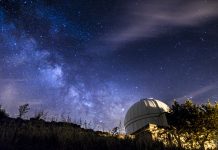
M F Warrender highlights how space technology plays an integral role in society and how NASA invests in technology development
The National Aeronautics and Space Administration (NASA), was established in 1958 by President Dwight D. Eisenhower with the vision: “we reach for new heights and reveal the unknown for the benefit of humankind.” Since then, thousands of people have been working for NASA around the world to try and achieve this.
NASA addresses a number of key questions. What’s out there in space? How do we get there? What will we find? What can we learn from space that will make life better here on Earth? Throughout history, NASA has conducted or funded research that has led to numerous improvements to life here on earth, as well as also broadened our knowledge of space.
NASA conducts its work within 4 principal organisations, called mission directorates:
- Aeronautics;
- Human exploration and operations;
- Science;
- Space technology.
The latter of these mission directorates, space technology, is responsible for rapidly developing, innovating, demonstrating, and infusing revolutionary and high pay off technologies that enable NASA’s future missions, while also providing economic benefit to the nation.
NASA stands by its belief that technology drives exploration. NASA’s pioneering leadership in space is aided by sustained investments in technology, which advance the agency’s space exploration, science and aeronautics capabilities. The federal agency seeks to improve our ability to access and travel through space; land more mass in more locations throughout the solar system; live and work in deep space and on planetary bodies; build next generation air vehicles, and transform the ability to observe the universe and answer profound questions in earth and space sciences. NASA also states that its technology development supports the nation’s innovation economy by creating solutions that generate tangible benefits for life on earth. NASA is without a doubt, investing in the future of innovation and the importance of research.
Space technology and innovation
Naturally, it would be easy to assume that the many science and innovation projects generated by NASA could often overlook the impacts on other sectors, such as health and the environment. Major programmes often have large environmental impacts, with science frequently and unintentionally overlooking the importance of the preservation of the climate. However, for many years, NASA has prided itself on its attention to environmental impacts, striving to lessen the use of ozone-depleting substances and the environmental consequences of research and innovation of space technology. This has been explicitly highlighted within a statement made by former NASA administrator Dan Goldin in 1994, in which he states: “NASA must be a leader in reducing the use of ozone-depleting substances and continue to identify programme and process revisions to reduce any adverse environmental impacts.”
Since then, this notion has been maintained and reinforced through recent programmes, securing NASA’s word on its environmental consciousness. The use of solar panels to power satellites has been a constant focal point of improvement, with NASA aiming to develop traditional solar panels to make them more cost-efficient and less bulky, ensuring that solar array technology can be at its best.
Supercomputers
Another example of NASA’s environmental excellence is this year’s new modular supercomputing facility – saving energy and water. Many facilities require significant amounts of water on a day to day basis and the task of powering these facilities consumes huge amounts of energy and water, for example, heating up and cooling down a high-end computing facility. A new system has recently been developed at Ames Research Centre in Silicon Valley, named Electra, which is expected to save about 1,300,000 gallons of water and a million kilowatt-hours of energy each year, equal to the annual energy usage of about 90 households. On top of this, it will also save NASA about $35 million dollars – about half the cost of building another big facility.
Despite what might be assumed, the reduced use of water and energy resources does not lessen the system’s capability. “The Electra system will provide users an additional 280 million hours of computing time per year”, according to Bill Thigpen, Chief of the Advanced Computing Branch at Ames’ NASA Advanced Supercomputing Facility. It already ranks 39th in the US on the TOP500 list of the most powerful computer systems.
This is just one of many recent developments by NASA to help with conservation, and it just goes to show that space technology and science really can benefit other areas of society. NASA has been true to its word regarding its efforts with the environment, and as stated by Goldin, “Environmental excellence is a way of life and must be ingrained as part of our culture.
Whether it is designing and fabricating robotic spacecraft, launching the shuttle, or conducting basic research, we must seek solutions which are environmentally benign.”
M F Warrender
Open Access Government










